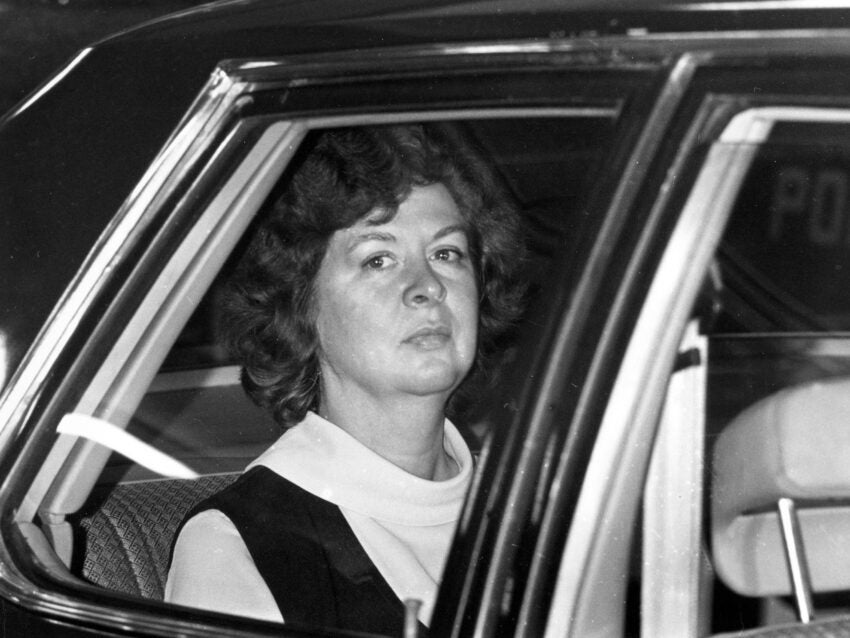
Sara Jane Moore, a woman with a tumultuous past and a radical mindset, passed away at the age of 95 in a nursing home in Tennessee. Her life was marked by her attempt to assassinate President Gerald Ford in 1975, an act that thrust her into the national spotlight and cemented her place in history.
The assassination attempt occurred on September 22, 1975, outside the St. Francis Hotel in San Francisco. Moore, standing among a crowd gathered to see the president, fired a .38-caliber revolver at Ford. The first shot missed, and a former Marine, Oliver W. Sipple, intervened, deflecting her second shot. The incident caused pandemonium, but Ford escaped unharmed. This event took place just 17 days after Lynette (Squeaky) Fromme, a follower of Charles Manson, had also attempted to harm the president.
Moore’s motivations stemmed from her belief in the need for a violent revolution to change the United States. She hoped her actions would ignite a widespread uprising, reflecting the turbulent political climate of the time. In a 2009 interview on NBC’s “Today” show, she reiterated her belief that the country needed change and that violence was the only path to achieve it.
Following the assassination attempt, Moore was apprehended, and investigations found no evidence of a conspiracy. She was deemed legally sane, despite her complex history, and pleaded guilty to attempted assassination. She was sentenced to life in prison, serving 32 years before being paroled. During her incarceration, she converted to Judaism, seeking access to kosher meals. Before her parole, Ford expressed a lack of forgiveness for Moore, emphasizing the gravity of her actions.
Moore’s life before the assassination attempt was complex. Born Sara Jane Kahn in West Virginia in 1930, she had a transient existence marked by multiple marriages, including one to Dr. Willard J. Carmel Jr., and four children. She worked various jobs, including as an accountant and in the Women’s Army Corps. By the late 1960s, she became involved in political activism in the Bay Area, participating in civil rights and anti-war protests. She was also associated with radical groups and, at one point, worked as an FBI informant.
Her involvement with extremist groups and her role as an informant created a web of conflicting loyalties and perceptions. After being ostracized by radicals, she sought to regain their trust, even going to the media to profess her Marxist and Maoist beliefs, and admitting her prior role as an informant. During this period, she purchased the .38-caliber gun she would later use in the assassination attempt. Before the shooting, Secret Service agents had briefly questioned her but released her, not perceiving her as a significant threat.
Moore’s actions have been immortalized in popular culture. She appeared as a character in Stephen Sondheim and John Wideman’s musical “Assassins,” which debuted off-Broadway in 1990. The musical portrayed her as a somewhat inept revolutionary. The author of the well-received biography of Moore, “Taking Aim at the President,” Geri Spieler, noted that Moore possessed a charming demeanor that often concealed her true intentions. It was this ability to appear harmless that likely contributed to the Secret Service’s initial misjudgment of her on the day of the assassination attempt.
After her release from prison in 2007, Moore lived under an assumed name and rarely gave interviews. She married Philip Chase, a clinical psychologist, and lived in a retirement community before relocating to Tennessee. Her legacy remains a complex one, a reminder of a time of political upheaval and the motivations that can drive individuals to commit acts of violence in the name of radical ideologies. Her story, filled with contradictions and complexities, continues to be a subject of examination and debate.

